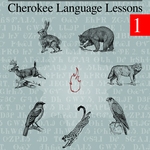
It is not perfection in speaking the Cherokee language that is required. Even the most proficient of speakers have differences in the way they speak from each other. What is required is participation. Participation in speaking it. In reading it. In writing it. In teaching it. If you do not participate, or if you go out of your way to cause others harm who are working hard to keep the language alive, you are only doing the work of those who sent us to the boarding schools. You have become “them”. The foreigners. The conquerors. Those who would remove us. Those who failed. Be counted among those who keep “them” failing. Be not among those who would remove us from this Earth.